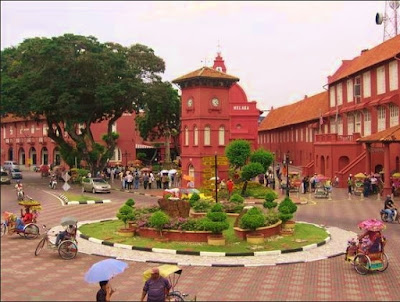 |
| Crane Cookies for Chinese New Year |
Cranes are an auspicious motif in Chinese arts and favoured as decorations during the Chinese New Year. Throughout Asia, the crane is revered as it is symbolic of peace, health, prosperity and mythical wisdom. Referred to as "bird of happiness" by the Japanese and "heavenly bird" by the Chinese, the crane stands for good fortune and longevity because of its fabled life span of a thousand years. The powerful wings of the crane were believed to be able to convey souls up to paradise and to elevate people to higher levels of spiritual enlightenment.
An ancient Japanese legend promises that anyone who folds a thousand origami cranes will be granted a wish by a crane. Some stories believe you are granted eternal good luck, instead of just one wish, such as long life or recovery from illness or injury. This makes them popular gifts for special friends and family.
Many enchanting legends and stories that have survived generations have been bestowed upon our feathered friends. When the boys were little, I would regale them with stories of the mystical birds while they folded origami cranes out of ang pows (red envelopes) that I would hang on my pussy willow stalks as decorations for the Chinese New Year.
Sharing two of our favourite crane stories.
TSURU NO ONGAESHI (Crane Returns A Favour)
A long, long time ago, there lived a poor woodcutter and his wife. One day, the woodcutter found a crane caught in a hunter's trap. It was snowing heavily and the woodcutter felt sorry for the helpless creature. He freed the bird and it flew off in a great hurry. That very same night, a beautiful girl dressed in white appeared at the old couple's doorstep in the raging snow storm. The young girl begged them to shelter her for the night as she was lost while on her way to visit some relatives. The childless couple warmly welcomed the stranger into their humble home. The snow had not quite stopped the next day, and the day after that, and the girl remained in the house of the elderly couple. She took great care of them and her gentle and kind ways endeared her to the old man and his wife. The girl then asked if she could stay and live with them as their daughter They were delighted and consented without hesitation.
One day, the lovely girl requested for a loom to be set up in her room so she could help with the household income. But her request came with a condition and she said,“When I am weaving in the room, none of you can come to look at me working." She then hid in the room, and wove for three days and nights without a break. Finally, she emerged from her room and in her hand she held the most beautiful cloth the couple had ever seen. The old couple sold the cloth for a fair price. The girl continued to churn out cloths that were so exquisite, they became the talk of the town. People from far and near came to buy her cloths. Soon the couple became very rich.
The old couple persevered in keeping their promise but as the days went by, they noticed that their daughter was getting frailer by the day. Overcome with curiosity, the old lady sneaked into her room to peek. Where there should have been a girl was a crane. The crane plucked its own feathers to weave between the threads to produce a glittering cloth. Large portions of the wing had already been plucked out, leaving the crane in a pitiful state. In front of the shocked elderly couple, the daughter who finished weaving approached them, confessing that she was the crane that was saved. She had intended to remain their daughter, but now that they had seen her true form, she had to leave. Suddenly, a flock of a thousand cranes appeared, flying from the western sky. Carrying the naked crane, the great flock flew towards the setting sun as the woodcutter and his wife sorrowfully watched,shedding tears of regret.
SADAKO SASAKI
 |
| The origami crane has become an international symbol of peace, a Peace Crane, through the sad but inspiring story of a young Japanese girl named Sadako Sasaki |
Born in 1943 in Hiroshima, Japan, Sadako was two years old when the atom bomb was dropped on Hiroshima, on 6th August 1945. Growing up, Sadako appeared healthy but at the age of 12, she was diagnosed with leukemia. While in the hospital, a friend showed her colourful paper cranes and told her an old Japanese legend, which said that anyone who folds a thousand paper cranes would be granted a wish. In the hope that she would recover soon, Sadako began making origami cranes with
the goal of making one thousand as inspired by the senbazuru legend. Sadly, she could only make about 600 cranes before she passed on after an eight-month battle with the disease.
After her death, Sadako's friends and schoolmates published a collection of letters in order to raise funds to build a memorial to her and all of the children who had died from the effects of the atomic bomb. In 1958, a statue of Sadako holding a golden crane was unveiled in the Hiroshima Peace Memorial Park. At the foot of the statue is a plaque that reads:
"This is our cry. This is our prayer. Peace in the world."
 |
| A statue of Sadako holding a golden crane |
“I will write peace on your wings and you will fly all over the world.”
(Sadako Sasaki)
Keep Calm and Carry On Linking Sunday
























































